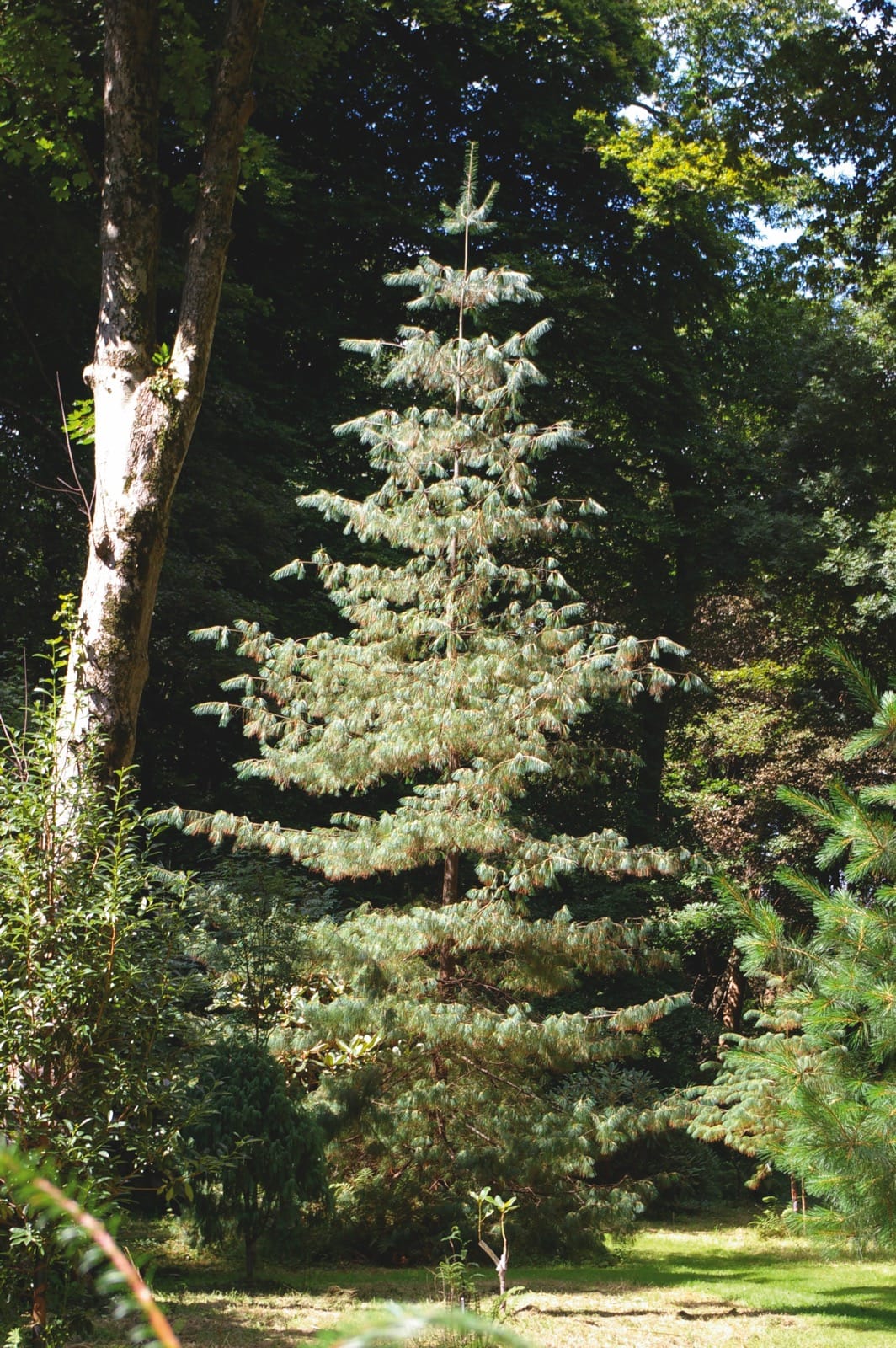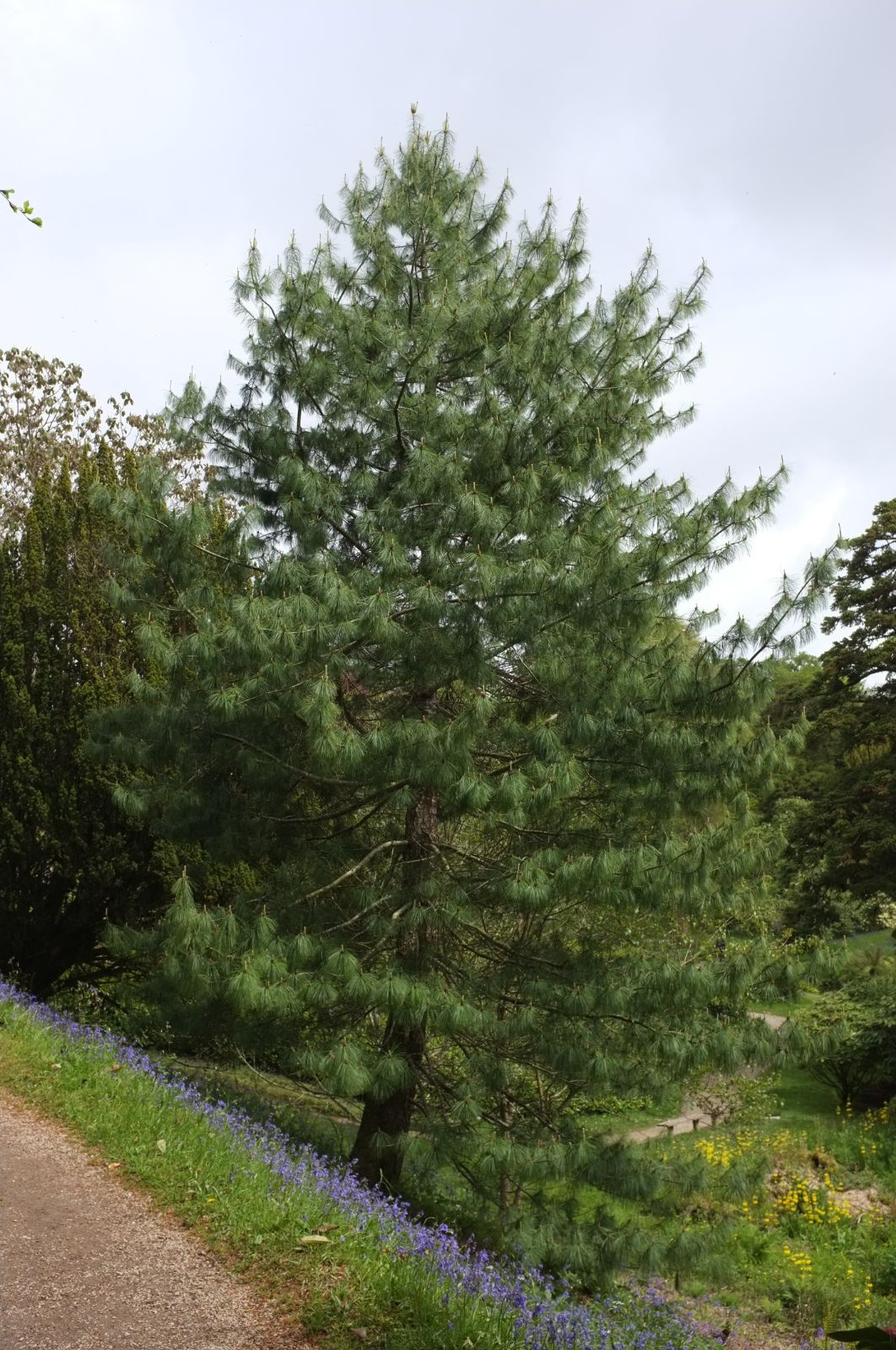Pinus bhutanica
Credits
Article from New Trees by John Grimshaw & Ross Bayton
Recommended citation
'Pinus bhutanica' from the website Trees and Shrubs Online (treesandshrubsonline.
Genus
- Pinus
- Subgen. Strobus, Sect. Quinquefolius
Common Names
- Bhutan Pine
Synonyms
- P. wallichiana subsp. bhutanica (D.G. Long & C.N. Page) Businský
- P. bhutanica var. ludlowii Silba
Other taxa in genus
- Pinus albicaulis
- Pinus arizonica
- Pinus armandii
- Pinus attenuata
- Pinus ayacahuite
- Pinus balfouriana
- Pinus banksiana
- Pinus brutia
- Pinus bungeana
- Pinus canariensis
- Pinus cembra
- Pinus cembroides
- Pinus chiapensis
- Pinus contorta
- Pinus coulteri
- Pinus culminicola
- Pinus densata
- Pinus densiflora
- Pinus devoniana
- Pinus durangensis
- Pinus echinata
- Pinus edulis
- Pinus elliottii
- Pinus engelmannii
- Pinus eremitana
- Pinus flexilis
- Pinus gerardiana
- Pinus greggii
- Pinus × hakkodensis
- Pinus halepensis
- Pinus hartwegii
- Pinus heldreichii
- Pinus henryi
- Pinus × holfordiana
- Pinus hwangshanensis
- Pinus jeffreyi
- Pinus johannis
- Pinus koraiensis
- Pinus lambertiana
- Pinus leiophylla
- Pinus longaeva
- Pinus massoniana
- Pinus maximartinezii
- Pinus monophylla
- Pinus montezumae
- Pinus monticola
- Pinus morrisonicola
- Pinus mugo
- Pinus muricata
- Pinus nelsonii
- Pinus nigra
- Pinus oocarpa
- Pinus orizabensis
- Pinus palustris
- Pinus parviflora
- Pinus patula
- Pinus peuce
- Pinus pinaster
- Pinus pinceana
- Pinus pinea
- Pinus ponderosa
- Pinus pseudostrobus
- Pinus pumila
- Pinus pungens
- Pinus quadrifolia
- Pinus radiata
- Pinus remota
- Pinus resinosa
- Pinus rigida
- Pinus roxburghii
- Pinus sabiniana
- Pinus serotina
- Pinus sibirica
- Pinus strobiformis
- Pinus strobus
- Pinus sylvestris
- Pinus tabuliformis
- Pinus taeda
- Pinus taiwanensis
- Pinus teocote
- Pinus thunbergii
- Pinus torreyana
- Pinus virginiana
- Pinus wallichiana
- Pinus wangii
- Pinus yunnanensis
Tree to 25 m. Crown moderately open. Branchlets slender, greyish green with conspicuous, whitish bloom and glandular pubescence; vegetative buds not or slightly resinous. Leaves in fascicles of five, persisting for two to three years, very slender, pendulous and curved, triangular in cross-section, 12–28 cm long, apex acute, upper surface vivid green, lower surface with conspicuous whitish bloom. Fascicle sheaths conspicuous, 1.8–2.3 cm long, bright golden-brown, deciduous. Cataphylls triangular, golden-brown, deciduous. Male strobili orange. Female cones solitary, peduncle 4.5–6 cm long, bracteate; cone 12–20 × 3–7 cm, elongate-cylindrical, mature in about 18 months, reddish brown to green, greenish brown at maturity. Scales elongated, thinly woody; apophysis 1–1.5 × 1.5–2.5 cm, rhombic, tan-brown; umbo terminal, triangular. Seeds brown, 6–9 mm; wings 2–2.5 × 0.7–1 cm, persistent. Grierson et al. 1980, Farjon 2005a. Distribution BHUTAN; CHINA: southeast Xizang, Yunnan (Dulong Co.); INDIA: Arunachal Pradesh. Habitat Moist, mixed broadleaved forest between 1750 and 2400 m asl. Mixes with P. wallichiana A.B. Jacks. at one site, though generally prefers lower altitudes with higher monsoon rainfall. USDA Hardiness Zone 8. Conservation status Least Concern. Illustration Grierson et al. 1980; NT579. Cross-reference S382.
Pinus bhutanica is closely related to the more familiar ‘Blue Pine’ P. wallichiana, from which it differs primarily in aspects of its habit. Pinus bhutanica has an open crown with long, sinuous branches, and branching is infrequent. The first-year shoots are covered in a conspicuous, whitish bloom with glandular pubescence, and the pendulous leaves are 12–28 cm long with conspicuous sheaths. In contrast, the crown of P. wallichiana appears congested, with many small twigs, and, where the species overlap, much shorter leaves. The first-year shoots of P. wallichiana are greenish (rarely with weak bloom) and glabrous, while the leaves are spreading to slightly pendulous and 11–18 cm long (Grierson et al. 1980). Although it had been collected previously, including by Frank Kingdon-Ward on his 1924 Tsangpo Gorge expedition, P. bhutanica was first recognised in the 1970s following fieldwork in Bhutan by Andrew Grierson and David Long as part of the Flora of Bhutan project at the Royal Botanic Garden Edinburgh, and was first introduced by them in 1979 (Grierson & Long 1986). Further introductions from Bhutan have also been received at Edinburgh, and progeny from these are being cultivated in the Scottish gardens and other collections to which material has been distributed. These gatherings include Sinclair & Long 5693 in 1984, Clark & Sinclair 1660 in 1990, and M.T. Heasman 9391 in 1997. Sinclair & Long 5693 is growing well at Edinburgh, noted at about 8–9 m tall in 2006 (M. Frankis, pers. comm. 2007). In general, however, P. bhutanica has not flourished in Scotland, and has done much better in gardens in southern England and Ireland, suggesting that it prefers a warmer climate (M. Gardner, pers. comm. 2007). Good trees are to be found in several collections. A specimen at Abbotsbury Subtropical Gardens, Dorset (grown from Sinclair & Long 5693) was 11 m tall when measured for TROBI by Owen Johnson in 2006, and another from the same collection at Tregrehan has reached approximately the same height, growing extremely well and becoming a beautiful tree (T. Hudson, pers. comm. 2007). Martin Gardner (pers. comm. 2007) reports that it is also thriving in Cornwall, at Glendurgan and on the Trevince Estate, where trees are now approaching 14 m. It seems to flourish in slightly less benign areas as well, trees at Westonbirt currently standing 9 and 10 m tall. With its long drooping needles and large cones, and potentially more elegant open habit than P. wallichiana, P. bhutanica is a choice and desirable tree. The most beautiful forms are to be found in southeastern Tibet (K. Rushforth, pers. comm. 2007).


